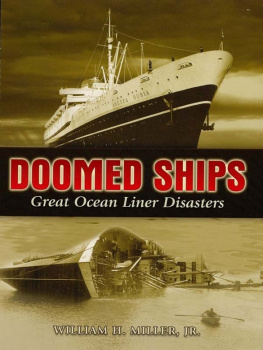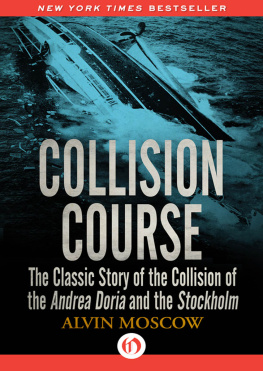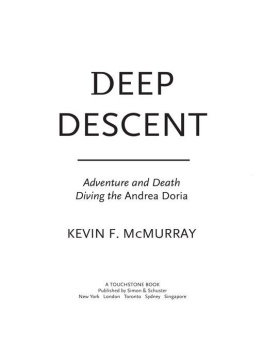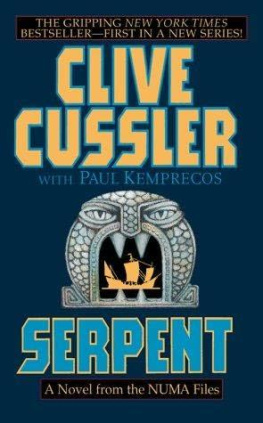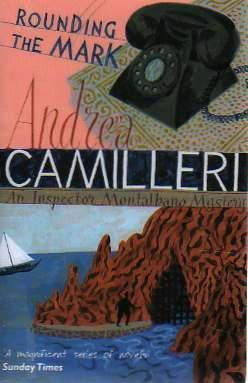DEEP
DESCENT
Adventure and Death
Diving the Andrea Doria
KEVIN F. McMURRAY
A TOUCHSTONE BOOK
Published by Simon & Schuster
New York London Sydney Singapore
Touchstone
Rockefeller Center
1230 Avenue of the Americas
New York, NY 10020
www.SimonandSchuster.com

Copyright 2001 by Kevin McMurray
All rights reserved, including the right of reproduction in whole or in part in any form.

First Touchstone Edition 2002
TOUCHSTONE and colophon are registered trademarks of Simon & Schuster, Inc.
For information regarding special discounts for bulk purchases, please contact Simon & Schuster Special Sales at 1-800-456-6798 or business@simonandschuster.com
Designed by Jaime Putorti
Map by Paul J. Pugliese
Manufactured in the United States of America
10 9 8 7 6 5 4 3 2 1
The Library of Congress has cataloged the Pocket Books edition as follows:
Deep descent : adventure and death diving the Andrea Doria/Kevin F. McMurray.
p. cm.
Includes bibliographical references.
1. Scuba divingAccidentsAtlantic Coast (U.S.) 2. Andrea Doria (Steamship) 3. ShipwrecksAtlantic Coast (U.S.) I. Title.
GV838.673.A75 M36 2001
363.14dc21 2001021621
ISBN 0-7434-0062-3
eISBN-13: 978-1-439-10742-3
ISBN-13: 978-0-743-40063-3
0-7434-0063-1 (Pbk)
With heartfelt thanks to my father, Joseph, and my wife, Victoria
A venturesome minority will always be eager to get off on their own let them take risks, for godsake, let them get sunburnt, stranded, eaten by bears, buried alive under avalanchesthat is the right and privilege of any free American.
16 IDAHO LAW REVIEW 407, 420-1980
CONTENTS

FOREWORD
On Wreck Diving
ONE
Death on the Doria
TWO
The Wreck of the Andrea Doria
THREE
My First Descent
FOUR
The Pioneers of Wreck Diving
FIVE
Penetrating the Doria
SIX
The Dying Season, Summer 1998
SEVEN
Back to the Doria
EPILOGUE
Where Are They Now?
APPENDIX A
Wahoo Contract
APPENDIX B
Seeker Contract
APPENDIX C
Andrea Doria Fatalities
ON WRECK DIVING
Over five-hundred years of mans ceaseless strivings to better himself can be found on the desolate sandy bottoms off the coast of the northeastern United States. Only an intrepid few dare risk this watery corner of our planets last frontier. I count myself among those lucky, reckless few.
There are many examples of wealth resting at the depths of the Atlantic. The Titanic and the Lusitania and the circumstances surrounding their untimely demises are known to millions. Yet thousands of other shipwrecks have broken the hearts of those who knew their passengers and crews. Those wrecks have also captured the imagination of those of us who refuse to let their memories die.
We divers who explore these wrecks consider ourselves the lucky ones. We plumb the depths in search of history and adventure. The dark, gloomy abyss, the threatening elements, and the dangerous sea creatures that lord over this realm have become our friends, for they have kept away the hordes and the weaker of heart and left us the spoils. These wrecks have become glorious testaments to human ingenuity, moments in time snatched from their rightful place, and underwater monuments to human striving, lost but not forgotten.
I, for one, have endured more than one query on why I partake in such a seemingly dangerous activity as wreck diving. As a husband and father of two I find it difficult to answer. To the uninitiated, the allure of the deep that protects these former vessels of humanity is minimal compared to the risk.
Most people understand the spell of the depths as long as it has to do with the warm, gin-clear waters of places such as the Caribbean that come complete with colorful reefs and exotic fish. But compared to wreck diving in the North Atlantic, warm-water reef exploration is like snowplowing down the bunny slope.
George Mallory, the mountain climber who mounted the first serious attempt to summit Everest and died as a result, was once quoted as saying that he climbed because its there, to which the first ascendant of the fabled El Capitan in Yosemite, Grover Cleveland (not the president), added his two cents worth: Because its nowhere. The same applies to wreck diving, surely the most obscure and dangerous of amateur activities: its there and its nowhere.
But the pithy replies are easy evasions for a true explanation of the attraction of wreck diving. Too many have died exploring the oceans deep secrets to write it off as a frivolous activity of the idle and foolhardy.
The Andrea Doria sank under tragic circumstances over four decades ago. As someone who remembers her dramatic sinking and yearns to keep a piece of that precious time close to heart, I can think of no more fitting tribute than beholding the magnificent lady up close and touching her now silent remains, and maybe if lucky and bold enough even bringing back some artifact from her to preserve and display.
The Andrea Doria is often called the Mount Everest of wreck diving, although there are deeper and more challenging wrecks for divers to explore. Yet the Andrea Doria has a mystique about her: her untimely demise, the tragic loss of life, the rescue of her survivors by her heroic brethren, and of course the whims of the open oceans that brought about her destruction.
The risks are many. Are they worth it? Perhaps not. As one diver related to me after attending one too many funerals of fellow deep-wreck divers, If I buy the farm diving, I told my wife, if someone in their eulogy says I died the way I would have wanted, she should stand up and yell, Bullshit!
No deep-wreck diver wants to die diving. Drowning while lost inside a wreck, being convulsed by oxygen toxicity, or falling victim to decompression sickness is no way to pass into the hereafter. Then why do we risk it?
I can speak only for myself. I trust my training, my skills, my equipment, my judgment, my ability to react, my luck, and possibly the kind hand of God to interfere when respectfully implored. I like going where few dare to tread. It makes my life unique and vibrant in this world of sameness where most people think that adventure is just getting to work on time. I like to think Sir Edmund Hillary and Warren Harding (again not the president) had the same feelings.
This book is about those who blazed new paths, challenged the odds, explored new frontiers, and pushed the envelope of deep-sea exploration. Unfortunately, many of them have died as a result of their quest. I write this book so that they will not be forgotten.
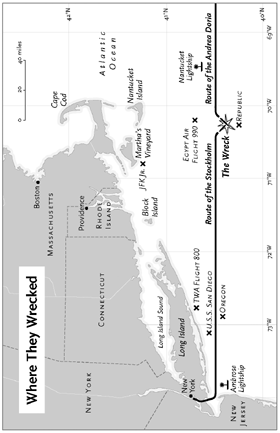
ONE


